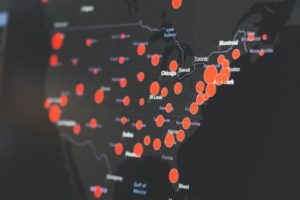American Rescue Plan Act (ARPA)—Summary of Select Employment-Related Provisions
The American Rescue Plan Act (the “ARPA”) became law on March 11, 2021. The $1.9 trillion COVID-19 relief bill contains important updates to the Families First Coronavirus Response Act (“FFCRA”), the CARES Act, and COBRA requirements, among other provisions, some of which are set to take effect April 1. Reavis Page Jump has summarized below some of the most salient employment-related provisions of the law. This is meant to be a general guide and not relied upon for legal advice. We expect the agencies administering these programs to continue issuing regulations and guidance, so please be aware that the precise contours of these programs are still developing.
For questions about the ARPA and how it might apply to a particular situation, please contact Elizabeth Stork or one of the attorneys in our employment practice group here.
1. Optional FFCRA Leave is Expanded and Extended
Extension of FFCRA Tax Credit Availability to September 30, 2021
Since January 2021, private sector employers with fewer than 500 employees and certain public sector employers covered by the FFCRA have no longer been required to provide Emergency Paid Sick Leave or Emergency Family and Medical Leave under the law. Instead, employers have had the option to continue to provide FFCRA leave and are eligible for refundable tax credits to offset costs associated with providing leave. This will continue until September 30, 2021 under the ARPA. Employers must be mindful of the non-discrimination rules below, however, to remain eligible for leave-based tax credits.
Expansion of Reasons for FFCRA Leave to Include Immunization and Testing
The ARPA adds tax credits for leave provided to employees obtaining COVID-19 vaccines, recovering from any COVID-19 vaccine-related illness, and/or seeking or awaiting results of COVID-19 testing due to exposure or at the employer’s request that the employee be tested.
This is in addition to the six reasons for leave already provided under the FFCRA, for which employers may now claim tax credits until September 30, 2021:
-
-
- employee is subject to a federal, state, or local quarantine or isolation order related to COVID-19;
- employee has been advised by a healthcare provider to self-quarantine related to COVID-19;
- employee is experiencing COVID-19 symptoms and is seeking a medical diagnosis;
- employee is caring for someone subject to a federal, state, or local quarantine or isolation order related to COVID-19 or who has been advised by a healthcare provider to self-quarantine;
- employee is caring for their child whose school or place of care is closed or childcare provider is unavailable due to COVID-19-related reasons; or
- employee is experiencing any other substantially similar condition specified by the U.S. Department of Health and Human Services).
-
Additional Paid Sick Leave and Increased Cap on Emergency FMLA Leave
If employees took 10 days of Emergency Paid Sick Leave under the FFCRA in 2020, the ARPA permits the employer to provide these employees with an additional 10 days of leave starting April 1, 2021.
The ARPA also raises the cap on Emergency FMLA leave under the FFCRA from $10,000 to $12,000.
Non-Discrimination Rules
Employers that provide FFCRA leave cannot obtain tax credits for this leave if they discriminate with respect to leave in favor of highly compensated employees (defined in Section 414(q) of the Internal Revenue Code), in favor of full-time employees, or in favor of employees with greater seniority.
2. Extension of Unemployment Benefits
The ARPA extends each of the three unemployment insurance (“UI”) benefits programs created by the CARES Act: the Federal Pandemic Unemployment Compensation (“FPUC”) program, the Pandemic Emergency Unemployment Compensation (“PEUC”) program, and the Pandemic Unemployment Assistance (“PUA”) program.
Individuals eligible for FPUC, which added an extra $300 weekly benefit for those who qualified for UI benefits, continue to be eligible for a $300 weekly supplemental benefit through September 6, 2021.
Individuals eligible to extend unemployment benefits under the PEUC program, which provided extended unemployment benefits to those who had exhausted their unemployment benefits under state UI programs, can receive up to 53 additional weeks of unemployment benefits.
Individuals eligible for PUA, which made unemployment benefits available to those not traditionally eligible, such as independent contractors, can receive up to 79 weeks (and in some cases up to 86 weeks) of benefits.
The ARPA also waives federal taxes on the first $10,200 of unemployment benefits collected in 2020 for individuals making less than $150,000.
3. COBRA Subsidies
The ARPA requires employers to subsidize 100% of COBRA premiums between April 1, 2021 and September 30, 2021 for certain “assistance eligible individuals.” Assistance eligible individuals are employees who were involuntarily terminated or who experienced a reduction in hours, and their covered dependents. The subsidized premiums will in turn be covered by tax credits.
Assistance eligible individuals qualify for the subsidy if they are entitled to COBRA at any time after April 1, 2021 and before September 30, 2021, and they either elect coverage, fail to elect coverage, or timely elect coverage but drop coverage prior to April 1, 2021. For those individuals who are eligible but failed to elect coverage or let coverage lapse, the ARPA provides for a new 60-day notice period to notify those eligible for the subsidy and enable them to elect coverage. The subsidy period may end earlier than September 30, 2021 if the individual reaches the end of their maximum coverage period or becomes eligible for another group health plan or Medicare.
 We expect forthcoming regulations from the Department of Labor and IRS, and a model notice from the Department of Labor, to clarify further how the COBRA subsidies will operate.
We expect forthcoming regulations from the Department of Labor and IRS, and a model notice from the Department of Labor, to clarify further how the COBRA subsidies will operate.
